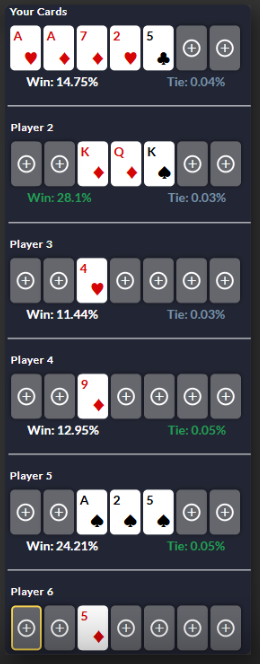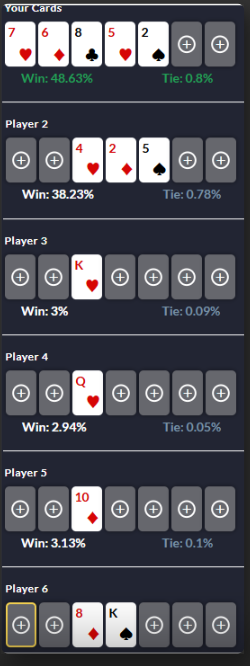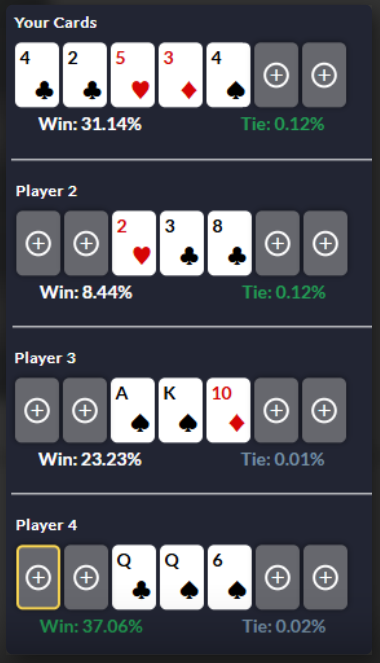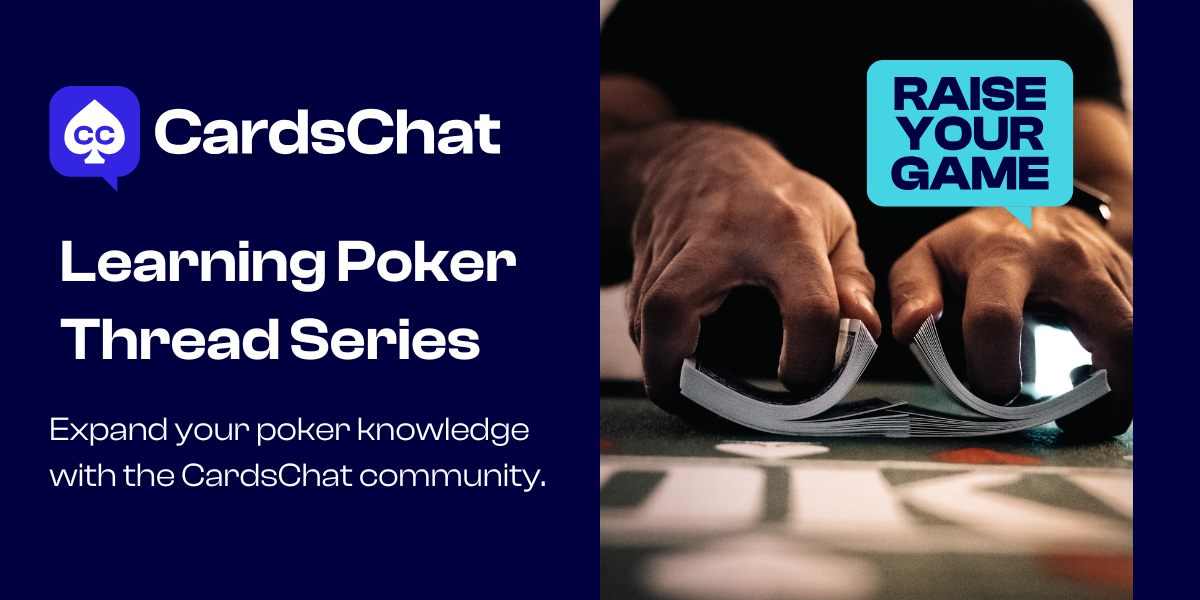CRStals
Moderator
Moderator
In the seventh and final part of our Learning Series on Seven Card Stud and Razz, we dive deep into evaluating hand strength beyond third street. This article will give you a comprehensive, actionable framework for making tough decisions as hands develop, blending math, psychology, and board-reading skills to maximize your edge.
Foundational Questions for Every Hand
Before analyzing any hand, always ask:
Hand #1: Seven Card Stud – Are Pocket Aces Good Enough?

You start with pocket aces in the hole—a dream scenario. But as the hand progresses to fifth and sixth street, the situation gets complicated. Here’s how to break it down:
Your Hand Analysis
Your chance to improve is roughly 30%—not great, but not hopeless.
Opponent Analysis
Player 2
Hand #2: Razz – Do They Really Have the Wheel?

You’re heads-up against a scary board in Razz. Your opponent is showing three wheel cards and betting aggressively. Should you believe them?
Your Situation
Hand #3: Seven Card Stud Hi/Lo – Can You Scoop?

In split-pot games, always track who’s playing for the high, who’s playing for the low, and who’s trying to scoop.
Evaluating the Lows
Final Thoughts
Seven Card Stud and Razz demand constant reevaluation as hands develop. By combining board awareness, opponent profiling, and precise odds calculations, you’ll make better decisions and maximize your winnings. Review all seven parts of this series for a complete education, and join the CardsChat community to stay sharp and get the latest strategy updates!
Ready for more?
Catch up on the full Seven Card Stud Learning Series and join the conversation with fellow players!
Next series coming soon: Position Play and Game Stages

Foundational Questions for Every Hand
Before analyzing any hand, always ask:
- What cards are already dead (folded or visible)?
- Did I represent a strong hand on third street with my betting?
- Am I targeting the high, the low, or both?
- Is there a credible opportunity to bluff?
Hand #1: Seven Card Stud – Are Pocket Aces Good Enough?

You start with pocket aces in the hole—a dream scenario. But as the hand progresses to fifth and sixth street, the situation gets complicated. Here’s how to break it down:
Your Hand Analysis
- Current holding: Pair of aces with weak kickers.
- Draws:
- Runner-runner straight possible with a three and four.
- Flush draw disappears by fifth street.
- Odds to improve:
- Two pair: 9 outs in 35 cards (~25.7%)
- Three aces: 1 out in 35 cards (~2.85%)
- Straight: 1.35% (requires hitting two perfect cards)
- Full house: Very unlikely, as the case ace is on the board.
Your chance to improve is roughly 30%—not great, but not hopeless.
Opponent Analysis
Player 2
- Showing a pair of kings (currently behind you).
- Flush unlikely (6 diamonds visible).
- Straight is a real threat (only one nine showing, no tens or jacks out).
- Two pair is a concern—no queens are dead, and downcards are unknown.
- Watch for aggression: If they start raising, they may have improved.
- Showing three of five cards needed for a straight flush wheel.
- Most likely to beat you with a flush or straight (few critical cards are dead).
- Two pair is unlikely due to similar blockers as your hand.
- Their board looks scary and they may try to represent a monster hand.
- Your board: Three unsuited, unconnected cards, but you’ve stayed aggressive.
- They might put you on:
- A big pair in the hole (like aces or sevens).
- Suited connectors for a straight/flush draw.
- Possibly a set of sevens, given the lack of sevens showing.
- Continue if:
- You hit a three, four, six, or the case ace.
- Opponents “brick” (don’t improve their boards).
- Fold if:
- Player 5 hits a fourth spade (flush very likely).
- Player 2 hits a king or queen and you don’t improve.
- General Rule:
- The “story” your board tells must remain credible. If your opponents’ betting and boards make sense for a strong hand, be ready to fold.
Hand #2: Razz – Do They Really Have the Wheel?

You’re heads-up against a scary board in Razz. Your opponent is showing three wheel cards and betting aggressively. Should you believe them?
Your Situation
- You have a made Razz hand using only two wheel cards.
- Opponent is showing three wheel cards; only one other low card is dead.
- For your opponent to beat you:
- They need two cards from 8, 7, 6, 3, or Ace (16/39 x 12/38 = ~13% odds).
- You don’t improve1.
- Did they bet or raise on third and fourth street? Consistent aggression signals strength or a well-constructed bluff.
- Is their betting pattern consistent with the board they’re showing?
- Sixth street is pivotal:
- If both players brick, reassess the story.
- If they improve and you don’t, be cautious.
- If you improve and they don’t, consider how to extract value or keep them in the pot.
- Don’t fold a made Razz hand lightly, but be wary of consistent aggression from a strong board.
- Use sixth street to gather crucial info about their true strength.
- Stay aware of your own board’s intimidation factor—if you improve, you might scare them off.
Hand #3: Seven Card Stud Hi/Lo – Can You Scoop?

In split-pot games, always track who’s playing for the high, who’s playing for the low, and who’s trying to scoop.
Evaluating the Lows
- Player 1 (Hero):
- Three wheel cards up, fourth down.
- 13 outs (aces, sixes, sevens, eights) from 38 cards, twice (~34% to improve on sixth street).
- Player 2:
- Also three to a low, but with an eight showing.
- Needs major help to catch up; you’re favored to win the low half.
- Player 1 (Hero):
- Two paths: Ace or six for a straight; four for hidden trips.
- Two pair on sixth street opens slim full house outs.
- Player 3:
- Chasing broadway, but many outs are dead.
- Flush is unlikely (three spades on board).
- If they continue, be wary—they may have strong downcards.
- Player 4:
- Pair of queens with two spades showing.
- Best hand showing, but vulnerable—no visible path to a low, and easily overtaken if opponents improve.
- With the lead for half the pot and multiple players in:
- Bet aggressively to build the pot. Winning half with three or more in means profit.
- If heads-up:
- Still bet hard for scoop potential, especially if your board threatens both high and low.
- Always:
- Reassess as the board develops—if opponents improve, be ready to adjust or fold.
- Track visible cards to refine your odds and block opponent outs.
- Tell a consistent story with your betting and board.
- Adjust aggression based on your improvement and opponent tendencies.
- In split-pot games, push for value when ahead for half or more of the pot.
- Be ready to fold if the board or betting pattern signals you’re beat.
Final Thoughts
Seven Card Stud and Razz demand constant reevaluation as hands develop. By combining board awareness, opponent profiling, and precise odds calculations, you’ll make better decisions and maximize your winnings. Review all seven parts of this series for a complete education, and join the CardsChat community to stay sharp and get the latest strategy updates!
Ready for more?
Catch up on the full Seven Card Stud Learning Series and join the conversation with fellow players!
- Part 1: Why These Strategic Poker Variants Deserve Your Attention
- Part 2: Mastering the Art of Hand Selection
- Part 3: Expert Guide to Card Tracking Strategies for Winning Poker Hands
- Part 4: Mastering Third Street in Seven Card Stud and Razz Poker
- Part 5: 7 Card Stud vs Razz Bluffing Guide: Advanced Poker Strategies to Win More Pots
- Part 6: Dominate Stud High/Low: Strategies for Scooping Pots
Next series coming soon: Position Play and Game Stages












